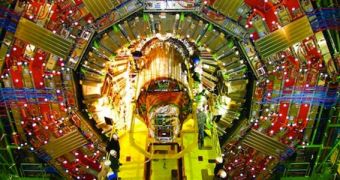A lot of ink has been spilled recently over a potential announcement of the discovery of the Higgs boson. This is expected to be confirmed or infirmed at a conference to be held on July 4. Discovering the elusive subatomic particle could however spell the end of particle physics as we know it.
Physicists have been developing a theory called the Standard Model for more than 40 years. It includes all known particles and their interactions, and the only thing currently missing is certifying that the fifth boson (the Higgs) actually exists. But the model has many problems as well, which won't go away.
A number of theories have been proposed to explain these discrepancies. One of them is supersymmetry, which holds that each particle has a much more massive superpartner at the subatomic scale. Scientists were hoping to find evidence that this is the case, but none has been revealed to date.
If the Higgs is discovered right where the Standard Model predicts, and no supersymmetry is identified, then the entire field of particle physics will come at a standstill, since experts will not really have any direction to go in, except try to solve some of the issues associated with the model, Wired reports.

 14 DAY TRIAL //
14 DAY TRIAL //